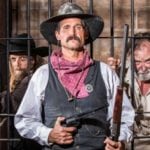 Technology
Technology  Technology
Technology  Religion
Religion 10 Catholic Histories That Reveal Acceptance of Abortion and Contraception
 Politics
Politics 10 Lesser-Known “First and Only” Facts about U.S. Presidents
 Miscellaneous
Miscellaneous 10 Things You May Not Know about the Fourth of July
 History
History 10 Shocking and Gruesome Founding Father Facts They Don’t Teach in School
 Crime
Crime The Ten Most Vicious Los Angeles Killers
 Miscellaneous
Miscellaneous 10 Indispensable Corporations the World Cannot Afford to Lose
 Animals
Animals 10 Unusual Wolves That Made The News
 Mysteries
Mysteries 10 Bizarre, Little-Known Phenomena
 Music
Music 10 Musicians Who Changed How Everyone Plays Their Instruments
 Technology
Technology 10 Little-Known Shifts in Computer Science
 Religion
Religion 10 Catholic Histories That Reveal Acceptance of Abortion and Contraception
 Politics
Politics 10 Lesser-Known “First and Only” Facts about U.S. Presidents
Who's Behind Listverse?

Jamie Frater
Head Editor
Jamie founded Listverse due to an insatiable desire to share fascinating, obscure, and bizarre facts. He has been a guest speaker on numerous national radio and television stations and is a five time published author.
More About Us Miscellaneous
Miscellaneous 10 Things You May Not Know about the Fourth of July
 History
History 10 Shocking and Gruesome Founding Father Facts They Don’t Teach in School
 Crime
Crime The Ten Most Vicious Los Angeles Killers
 Miscellaneous
Miscellaneous 10 Indispensable Corporations the World Cannot Afford to Lose
 Animals
Animals 10 Unusual Wolves That Made The News
 Mysteries
Mysteries 10 Bizarre, Little-Known Phenomena
 Music
Music 10 Musicians Who Changed How Everyone Plays Their Instruments
10 African-American Cowboys Who Shaped The Old West
Many of us grew up watching Westerns on TV and at the movies. Seldom did anyone other than a white person play the hero. Books and textbooks also presented a heavily whitewashed picture of the Old West. However, the real Wild West was filled with colorful characters of all races and creeds. If the history of Texas is any indication, perhaps as many as one in four cowboys were black. Here are some of their stories.
10Addison Jones
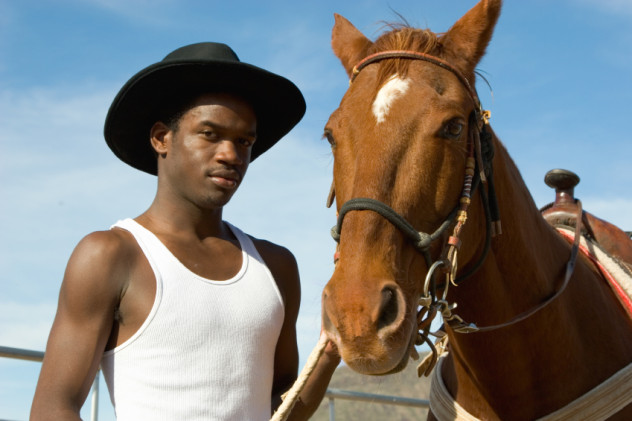
Dubbed “the most noted Negro cowboy that ever topped off a horse,” Addison Jones was known for his skill at breaking (“topping off”) untrained wild broncos. That involved clinging on for dear life while the bronco bucked and tried to throw the rider off. As such, most cowboys retired from the job in their thirties. Addison kept at it until he was 70. It was said that he could “read a horse’s mind by staring it in the eye” and he was equally renowned at riding, roping, and cattle driving.
The historian J. Evetts Haley described one of Addison’s more impressive roping tricks: “He would tie a rope hard and fast around his hips, hem a horse up in the corner of a corral or in the open pasture, rope him around the neck as he went past at full speed, and where another man would have been dragged to death, Add would, by sheer will and power on the end of the rope, invariably flatten the horse out on the ground.”
A popular legend in Roswell, New Mexico claims that when Addison got married, all the local cattle ranches wanted to show their respects with a gift. Unfortunately, they all had the same gift idea and the newlyweds found themselves saddled with 19 cooking stoves. Not much else is known about Addison’s personal life, but his cattle skills were enough for him to be featured in a popular folk song of the time called “Whose Old Cow?” Sadly, the song’s description of Addison includes racial epithets and an unfortunate accent, so it naturally isn’t performed much anymore.
9Mary Fields
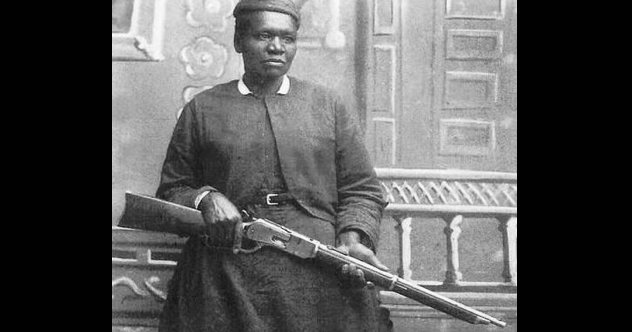
Also known as “Stagecoach Mary,” Mary Fields was one of the most formidable women of the Old West. Said to be a match for any man, she enjoyed brawling and was known to brag that she could knock any challenger out with a single punch. Newspapers of the time claimed that she broke more noses than anyone else in central Montana and she always backed herself up with a six-shooter holstered under her apron. She liked to drink, smoked bad homemade cigars, and was so respected in her adopted hometown of Cascade, Montana, that her birthday was made a school holiday every year.
Born a slave in Tennessee, Mary gained her freedom after the Civil War. She subsequently worked on the steamboat Robert E. Lee during its famous race with the Natchez, when the crew even tossed ham and bacon into the boilers and sat on the release valves to build the steam pressure higher. In 1885, she moved to Cascade, Montana, to work for the nuns of St. Peter’s Convent. She did all the heavy work, including hauling supplies, carpentry, and stonemasonry. One of her most famous deeds came when wolves attacked her supply wagon during a night run. The horses were spooked and the wagon overturned, but Mary stood guard over the supplies until morning, keeping the wolves at bay with her trusty revolver.
The nuns loved Mary, but she was forced to resign after Montana’s first Catholic bishop heard of her brawling and a rumored gunfight. Shortly afterward, she hitched a team of horses faster than any other applicant and was hired to deliver mail to the towns around Cascade, braving blizzards and harsh terrain in the process. She was 60 at the time and only the second woman ever hired by the US Postal Service.
There was also a softer side to Mary. She loved baseball and always presented the Cascade team with bouquets of flowers from her garden. She babysat for most of the children in town, including the actor Gary Cooper, who recalled her fondly later in life. After retiring from delivering mail, she tried to open a restaurant, but went broke because she always let those in need eat for free. When her house burned down in 1912, the whole town came together to build her a new one. A 1910 contract to lease a hotel in town includes a clause stipulating that Mary could always eat for free. She was also the only woman allowed to drink in the local saloon. She passed away of liver failure in 1914.
8Charlie Willis
Charlie Willis was born a slave in Austin, Texas, in 1847 and eventually became known across Texas as a bronco buster and cattle drover—and as a talented songwriter to boot. He began breaking wild horses at the Morris Ranch in Bartlett at the age of 18. At 23, he married Laura Davis and the couple subsequently raised four sons and three daughters. From the age of 24, he was a regular cattle drover along the famous Chisholm Trail, a challenging 1,600-kilometer (1,000 mi) ride from Texas to the railheads in Kansas City.
Today, Charlie is most famous for the tune “Good-bye, Old Paint.” The song is now preserved in the American Folklife Center at the Library of Congress as a valuable historical record of cowboy culture. It was first collected in 1947 by the musicologist John Lomax, who recorded a performance by the fiddle player Jess Morris. The song was initially credited to Morris, but he later clarified that he had been taught the lyrics by Charlie Willis when he was a boy. “Old Paint” was supposedly the name of Charlie’s trusted horse on the Chisholm trail.
Charlie Willis lived to a ripe old age and was buried in 1930 in the cemetery next to his property in Bartlett, Texas.
7Isom Dart
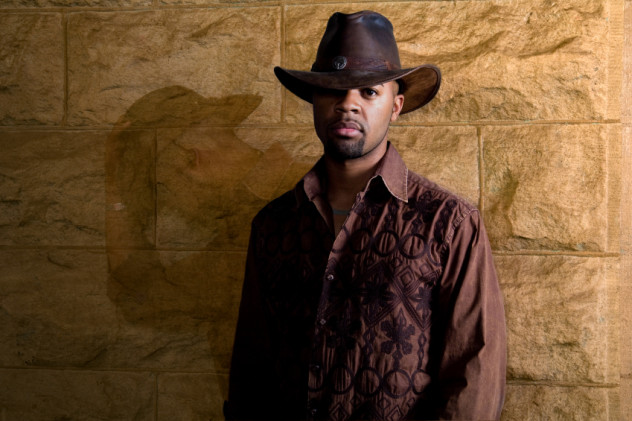
The exact details of Isom Dart’s life are disputed. He might have been a notorious cattle rustler, or he might have been a simple rancher who had the misfortune to cross paths with one of the most ruthless hired killers in Wild West history: the Pinkerton detective Tom Horn. Either way, on October 4, 1900, Dart stepped out of his cabin in Brown’s Hole, Colorado, and was shot dead by a hidden gunman. Two spent shells were later discovered under a nearby tree. The killer was never officially found.
Dart had arrived in Brown’s Hole two decades earlier. He set himself up as a rancher, but it was widely rumored that he was really Ned Huddlestone, the only survivor of Wyoming’s notorious Tip Gault gang, which had otherwise been wiped out by vigilantes. In Brown’s Hole, Dart might have returned to his old tricks, teaming up with local small ranchers Matt Rash, Jim McKnight, and “Queen Ann” Bassett to rustle cows from cattle baron Ora Haley.
Another version of events suggests that Haley was deliberately trying to force the small ranchers out and that his huge herds were threatening to overwhelm the smallholders of Brown’s Hole. Either way, Haley and other large ranchers in the area hired Tom Horn to investigate allegations of rustling in Brown’s Hole. Horn went undercover on Rash’s ranch and mysterious letters soon appeared warning Rash and Dart to leave town or face the consequences.
In July 1900, Matt Rash was found shot dead in his cabin. He had tried to write the name of his killer in his own blood, but the writing was illegible. Dart must have known his life was in danger, but he refused to leave his home. He was killed a few months later. An attempt was also made to murder a local named George Banks, who explained that he had heard Horn discussing plans to “kill Rash and that Negro.”
Nobody was officially prosecuted over the murders of Rash and Dart. Tom Horn was executed in 1903 for the murder of a 14-year-old boy.
6The Texas Kid

Not much is known about John “The Texas Kid” Hayes, but he has remained in the popular imagination for his dramatic way of opposing segregation. Born in Waco, Texas, the outlaw always kept an eye out for “Whites Only” signs on drinking establishments in towns he passed through. When he spotted one, he would enter and ask for a drink. If the bartender refused, he got his revenge by riding his horse into the bar and shooting out all the lights before hightailing it out of town.
Another black cowboy who refused to respect segregated saloons was Jess Crumbly of Cheyenne. He was reported to stand 193 centimeters (6’4″) tall and weigh 110 kilograms (245 lb) and was known as “Flip” because anyone he hit would virtually flip backward. Unsurprisingly, he drank where he wanted.
The spread of segregation in the West sparked a number of such attempts to fight back by African-Americans, culminating in 1878, when “Buffalo Soldiers” from the 10th Cavalry shot up a saloon where locals had attacked their sergeant in San Angelo, Texas.
5Bass Reeves
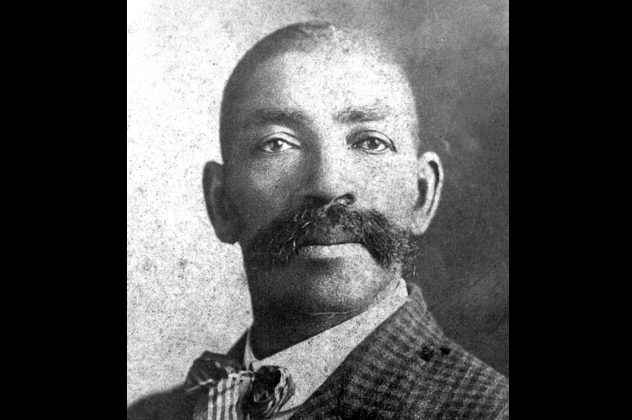
In the years after the Civil War, the Indian Territory of modern Oklahoma had a reputation as the most lawless place in the country. So many criminals sought refuge there that Native American children had a song about it: “Oh, what was your name in the States? Was it Johnson or Thompson or Bates? Did you kill your wife, and fly for your life? Say, what was your name in the States?” Of around 200 US Marshals killed in the line of duty, 130 were killed in Indian Territory during the period.
So when “the Hanging Judge” Isaac C. Parker arrived to bring order to the territory in 1875, he sought to commission the best of the best as US Marshals. And he lucked out with Bass Reeves, a former slave who would become arguably the finest lawman in the history of the West.
Born in Arkansas, Reeves fled to Oklahoma after punching his owner out during a game of cards. He apparently lived with the Creek and Seminole nations during this time and became fluent in several Native American languages. As a Deputy US Marshal, he would count on his good relationships with the tribes to stay one step ahead of the outlaws who left cards promising to kill any lawman who stepped over the “Dead Line” into Indian Territory.
But even the most vicious outlaws were no match for Reeves, who captured over 3,000 criminals and killed more than a dozen in 27 years as a marshal. He was so successful that he used to head out with a wagon, a cook, and one other lawman, do a circuit of Oklahoma, and return with a dozen wanted criminals tied behind the wagon. On one occasion, he bumped into three notorious outlaws coming down a trail. A short gunfight later, two of the outlaws were dead and the third had surrendered. On another occasion, he rode into the middle of a lynch mob and rescued their intended victim. Nobody in the mob even tried to stop Bass Reeves. Later, he halted a budding race war in a small town by arresting everyone involved.
But Bass’s career wasn’t without tragedy. In his most famous case, he had to track down and arrest his own son, who would be sentenced to life in prison for murdering his wife.
4Cherokee Bill
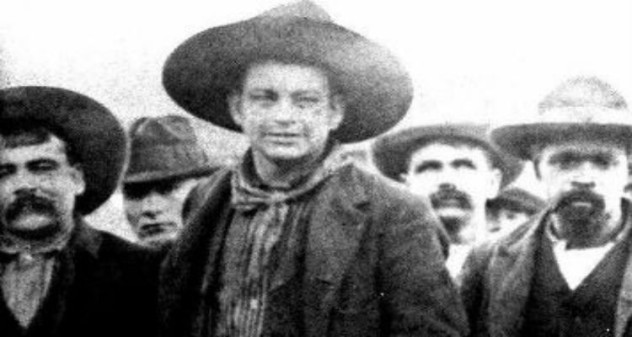
Of course, you can’t have the Old West without outlaws, and Crawford “Cherokee Bill” Goldsby was every bit as ruthless as Jesse James or Billy the Kid. The son of a Cherokee mother and an African-American “Buffalo Soldier” from the 10th Cavalry, Goldsby supposedly committed his first murder at the age of 12, shooting his brother-in-law during an argument over chores. He avoided serious punishment due to his age, but then shot someone else when he turned 18 and had to flee his hometown.
The authorities tracked him to Oklahoma’s Indian Territory, where he had joined forces with the outlaw Cook brothers. But Goldsby sparked a shoot-out, killing lawman Sequoyah Houston and escaping in the carnage. His sister Maud agreed to hide him, but Goldsby grew furious when he saw Maud’s abusive husband whipping her. Maud’s husband soon became the second brother-in-law shot dead by Cherokee Bill.
Goldsby next rejoined the Cook brothers and began a notorious crime spree, robbing banks and trains across Oklahoma. The gang’s most daring crime came when they held up the depot of the Missouri Pacific railroad, then rode hard for two hours and robbed the railway agent in the next town over. But the gang wasn’t made of Robin Hood–style heroes: Just 10 days later, they callously wrecked the Kansas City and Pacific Express before robbing it. In Nowata, they murdered the railway agent and then lay in wait for the train, shooting another railway employee when he opened the door.
Shortly afterward, Goldsby was finally caught and taken before Judge Isaac Parker, who sentenced him to death for murdering a bystander while robbing a general store. However, the Cherokee Kid had one last trick up his sleeve. A friend smuggled him a pistol and he tried to stage a breakout. A gun battle with the guards soon turned into a standoff, which lasted until the guards persuaded another prisoner named Henry Starr to negotiate Goldsby’s surrender. Starr got his freedom and Cherokee Bill was promptly hanged, with his last words an understated “This is about as good a day to die as any.”
3Nat Love
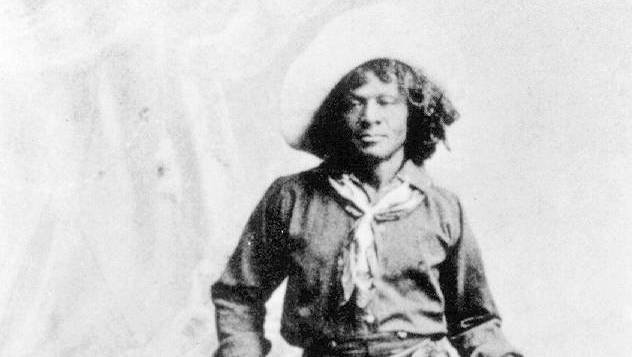
Nat “Deadwood Dick” Love ensured his legacy as one of the most famous black cowboys by writing his own autobiography: The Life And Adventures Of Nat Love, Otherwise Known In Cattle Country As Deadwood Dick. Ironically, he’s still one of the least well-documented cowboys on the list, since his book is written in such a bombastic style that historians consider it completely unreliable.
According to Love’s presumably exaggerated account, he left Tennessee at the age of 16, seeking a life of adventure out west. He had a talent for breaking horses, which he used to get a job with the Duval Ranch crew in Kansas City. The trail boss told Nat he could have the job if he could ride a horse called “Good Eye.” Of course, “Good Eye” had never been broken before. But Nat hung on for “the toughest ride I ever had” and joined the crew for $30 a month.
Nat learned the business quickly and was soon promoted to chief brand reader and battle buyer. In this role he traveled to Mexico and learned fluent Spanish. He also spent hours practicing with his .45, until he became a crack shot. Nat later joined the Gallagher ranch in Arizona, where he fought rustlers and hostile Native Americans. He also supposedly crossed paths with a number of famous Wild West figures, including Jesse James, Pat Garrett, and Billy the Kid.
On one occasion, the crew drove a large herd to Deadwood, South Dakota. They arrived in time for the Fourth of July, when the town had a cowboy contest with a $200 prize. Nat won every single event, including roping, riding, bridling, saddling, and shooting. This earned him the nickname “Deadwood Dick.” He subsequently retired from the cowboy life to become a Pullman Porter and compose his memoirs. Although Love was likely a real cowboy, there is no independent source verifying the wild events in his autobiography.
2Bill Pickett
Of black and Native American descent, Bill Pickett found fame as a rodeo performer in Texas during the early 20th century. He became famous for inventing a bull-wrestling technique known as “Bulldogging,” which became a popular rodeo event. A bulldogger would ride up alongside the bull before reaching down to grab the bull’s head. Twisting the head upward, the bulldogger would then bite down on the bull’s upper lip.
Paralyzed by the pain of somebody biting its lip, the bull would be easy to control and the cowboy would quickly pull the animal to the ground. Bill apparently developed the technique after seeing literal bulldogs subdue cattle in the same way. Unsurprisingly, the technique was eventually discontinued due to animal cruelty concerns.
When not biting animals, Bill spent years performing in the Miller Brothers’ 101 Ranch Show. He also put on an “extraordinary and spectacular” performance at the famous Cheyenne Frontier Days rodeo and became the first black cowboy to be featured in a movie. He died in 1932 after being kicked in the head by a horse. His death was announced on the radio show of his good friend Will Rogers, and he was inducted into the National Rodeo Hall of Fame in 1972.
1Bob Lemmons

Bob Lemmons was known for his extraordinary skill at capturing wild mustangs. After growing up a slave, he gained his freedom and moved to an area of West Texas overrun with the wild horses. He became a cowboy for a local rancher named Duncan Lammons, who gave Bob his surname, which changed spelling slightly over the years. Bob farmed and herded cattle for Duncan. Most importantly, he learned about horses from the experienced rancher.
At the time, mustangs were highly prized steeds and no one could equal Bob’s skill at capturing them. His unique approach involved gaining the herd’s trust over a period of time. Whereas a large group of people might have spooked the herd, Bob always worked alone, until he was able to infiltrate the herd without alarming the horses. Then he would mount and break the leading horse. Once the leader was conquered, the rest of the herd would follow it back to the ranch.
This was lucrative work and Bob was able to save up a significant amount of money. He eventually bought his own ranch and built up large herds of horses and cattle. He and his wife Barbara later became known for their generosity during the hard times of the Great Depression. He died in 1947, just one year short of his 100th birthday.
PJB5 is recently retired and exploring interesting things that there never was time for before.


![10 Worst Massacres Of African-Americans [DISTURBING IMAGES] 10 Worst Massacres Of African-Americans [DISTURBING IMAGES]](https://listverse.com/wp-content/uploads/2019/10/vote-150x150.jpg)
